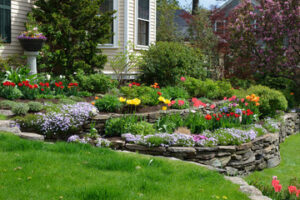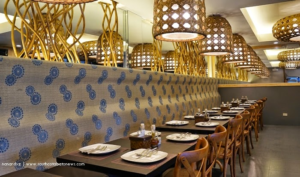Air ducts can collect dirt, dust, pet dander, mildew and other debris. These contaminants get pulled into the HVAC system and recirculated throughout the house.

Air Duct Cleaning Naples FL removes these pollutants and helps your home breathe better. This is especially important for individuals with respiratory issues or allergies. The benefits of periodic cleaning are many:
Air duct cleaning is necessary to ensure that the circulating air in your home is as clean as possible. Dirty ducts are a breeding ground for allergens like dust mites, pollen, mildew, and mold. These pollutants can aggravate existing respiratory conditions like asthma and bronchitis. They can also create a host of other health issues including itchy eyes, watery nose, and sneezing.
During a professional air duct cleaning, air duct cleaners use specialized blowers and vacuums to remove all debris from the supply and return vents of your forced-air system. This process eliminates the contaminants that have built up over time, allowing your HVAC systems to function properly and providing you with clean, healthy air.
How often your ducts need to be cleaned depends on many factors. For example, households with multiple pets may require more frequent cleaning because pet dander and hair can accumulate in the ducts. In addition, if your family members suffer from allergies or asthma, the buildup of these allergens in your ducts can make the symptoms worse. In these cases, it is recommended that you have your air ducts cleaned every two to three years.
Another factor that influences the frequency of air duct cleaning is the age of your home and your system. Older ducts, in particular, tend to collect more dirt and particulates than newer ducts. This dirt can clog filters and impede the flow of air, causing your HVAC system to work harder than necessary to maintain a comfortable temperature.
Newer homes have better filtration systems that can help prevent the buildup of these harmful pollutants, but even these filtered airways need to be cleaned on a regular basis. Air duct cleaning also eliminates odors in your ductwork that can result from cooking, smoking, cleaning chemicals, and other sources.
If you have recently undergone construction or renovation in your home, you should have your air ducts cleaned immediately to prevent the debris from settling in your ductwork and hampering the efficiency of your HVAC system. In addition, changing HVAC filters regularly and scheduling routine maintenance can help reduce the need for frequent air duct cleaning.
Reduced Energy Bills
In the era of high energy prices, homeowners are always looking for ways to cut down their home energy consumption and reduce their monthly utility bills. Besides investing in efficient appliances and proper insulation, air duct cleaning is an often-overlooked practice that can significantly cut down household energy costs.
Dirty ducts can restrict airflow to and from HVAC components, forcing them to work harder to maintain set temperatures. The extra strain on the system leads to increased energy consumption, increasing your household’s energy bills and wasting energy. Regular air duct cleaning removes the dust and debris that accumulates inside ductwork, eliminating obstructions and improving airflow, resulting in reduced HVAC strain and increased energy efficiency.
Leaky ducts also result in heat loss in the winter and heat gain in the summer, consuming excess energy to operate your heating and cooling systems. The good news is that repairing leaky ducts is an affordable and easy fix, saving you money on your energy bills.
When your ducts are clean, the fresh air they circulate through your home will be free from unpleasant odors caused by smoking, pet dander, paint fumes, household cleaning products, and mold and mildew. Duct cleaning also eliminates the fungi and bacteria that collect in ductwork, preventing them from spreading spores throughout your living space.
Unpleasant odors from your vents are an indication that your air ducts need cleaning. Additionally, if you notice that some rooms are warmer or cooler than others, this is another sign that your ducts need to be cleaned. A sudden increase in your utility bill could also be a warning sign that you have dirty ducts. If you suspect that it’s time for an air duct cleaning, call a professional service provider in your area to request a quote. They will inspect your ductwork, identify any areas that need attention, and provide a detailed estimate for the work required. They’ll even explain the benefits of a thorough duct cleaning and what to expect during the process. Air duct cleaning is not something you want to attempt on your own, as it’s a complex and delicate procedure that requires training and specialized tools.
Improved Indoor Air Quality
Air ducts are a favorite place for dust, dirt, and allergens to hide. When these contaminants are pulled into the HVAC system and recirculated throughout the home, they can cause many problems. Air duct cleaning removes these contaminants and reduces the risk of health problems, especially for those with respiratory conditions, auto-immune disorders, or asthma. Duct cleaning can also make your home look cleaner and smell fresher by reducing dust buildup and removing odors caused by bacteria, mold, and mildew.
Your HVAC system works hard to keep your home comfortable, but it can’t do that if it’s constantly having to fight through dust and debris in the ductwork. Regular cleaning can help your system operate more efficiently and save you money on energy bills.
Air duct cleaning involves a thorough cleansing of all components of your forced-air system, including the supply, intake, and return ducts. It’s important to hire a professional for this task, as it requires extensive knowledge of HVAC systems and the use of specialized tools. An experienced contractor will be able to clean even the most difficult to reach corners of your ductwork, and they’ll leave you with a healthier indoor environment.
If your home has recently undergone a construction project, it’s essential to have the air ducts cleaned. This is because construction stirs up a lot of dust and dirt that can easily settle in the air ducts, causing them to become dirty. Professional air duct cleaning uses high-powered vacuums and brushes to clean out the supply, intake, and return ducts throughout your home.
While it is possible to do air duct cleaning yourself, it’s best left to the pros for a thorough job. An experienced professional will be able to clean even the most stubborn corners of your ductwork and get rid of all of the contaminants that have built up over time. They can also seal any cracks or crevices in your ductwork to prevent future buildup, making your system more efficient and saving you on monthly utility costs. It will also prolong the life of your HVAC system.
Reduced Allergies
If you are constantly sneezing, have a runny nose or itchy eyes and still experience allergy symptoms despite numerous trips to the doctor and over-the-counter medications, then your allergies may be caused by dirty air ducts. Dirty ducts often contain harmful contaminants like pet dander, mold, bacteria, mildew and pollen, which cause a variety of health issues when inhaled by allergy sufferers. These allergens can also build up over time and prevent the HVAC system from functioning properly, making it difficult to circulate fresh air through the home.
When an allergy sufferer breathes in these harmful pollutants, their immune systems respond with inflammatory responses that lead to itchy, watery eyes, a runny nose and sinus congestion. These inflammatory responses can also contribute to headaches and other health problems. Regular duct cleaning significantly reduces allergen exposure, creating a healthier indoor environment.
Dust mites, which are common allergens, can grow in air ducts and release irritant particles when disturbed. These particles can then circulate throughout the home and aggravate allergy symptoms when inhaled. Duct cleaning removes the accumulating dust mites, improving indoor air quality and eliminating allergy triggers.
Mold spores can also build up in air ducts and release them into the home when the HVAC system runs. The spores can then be inhaled by occupants, leading to a variety of respiratory problems including allergies and asthma. Duct cleaning removes the accumulated mold spores and eliminates their ability to circulate in the air, thereby reducing indoor allergy levels.
Other airborne contaminants can also accumulate in air ducts, including pet dander, smoke, paint fumes, cleaning agents and odors from cooking. When these contaminants are blown through the vents, they can aggravate allergy and asthma symptoms and create an unpleasant smell in the home. Duct cleaning removes these contaminates and leaves the home with a pleasant fragrance.
The benefits of having your air ducts cleaned are significant and long-lasting. Having the system regularly cleaned can improve indoor air quality, increase HVAC efficiency and save you money on energy bills. The resulting cleaner air is better for everyone, especially allergy and asthma sufferers.

